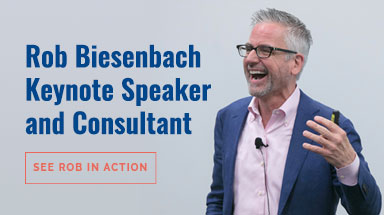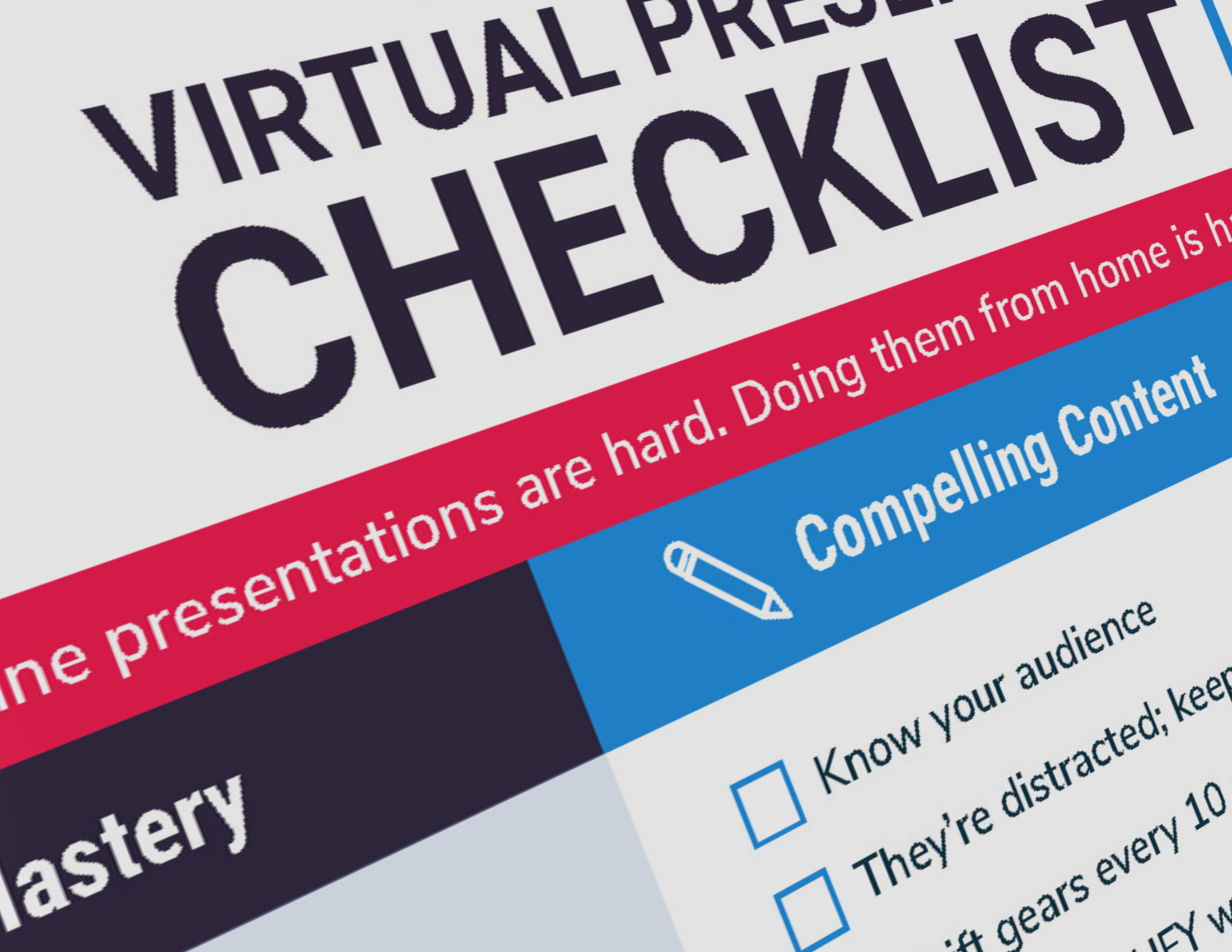Storytelling is one of the most powerful ways to engage and persuade an audience.
But not if you’re telling the same old stories we’ve all heard a thousand times before. You need to tell truly original stories — otherwise, people will tune you out.
Here’s What Not to Do
Stop me if you’ve heard this one before:
A professor fills a jar with rocks and asks his students if they think it’s full …
Or this one:
A battleship spots a light from an approaching vessel and orders it to adjust course …
Or this old classic:
A young man comes upon thousands of starfish washed up on the beach and throws one back into the water. An older man scoffs, telling him he can’t possibly save them all …
Just in case you haven’t heard these tired old tales (*spoiler alert*) the jar isn’t full until it’s filled with gravel, sand and water, the other ship is actually a lighthouse, and the young man educates the older one on how saving just one life makes a difference.
That last one’s been told so often, the star thrower character varies from an old man to a young man to a little girl to Jesus!
Stories That Have Outlived Their Freshness Date
These were all probably excellent stories when they were told, oh, 20 million times ago. But at this point, they’ve lost their impact due to overuse.
How stale are these stories? When I Googled them I got 6 million, 4 million and 3 million hits, respectively.
When I work with clients on a speech or other communication, they’ll often come to me with a story they want to use, which is great. I always encourage storytelling.
But when they tell me they found it online, I suggest we look elsewhere. Piece of advice: if it’s on the Internet, just assume everyone’s heard it before.
So how do you come up with original stories? Here are five steps to discovering and collecting stories nobody’s ever heard before.
1. Draw on Your Personal Experience
Of course, the best way to ensure your story is original is to tell one from your own personal experience.
I was working with the head of a sales organization who needed to challenge her sales force to focus on the nuts and bolts of selling. Many in her audience might view this message skeptically, coming from someone who was now ensconced safely in the executive suites.
So she told this story:
When I first started selling, I was petrified of making cold calls — going out and knocking on prospects’ doors.
So whenever I went to a new office building I’d take the elevator all the way to the top floor, start there and work my way down. Because I knew if I was on the first floor, it would be far too easy to just walk out after the first couple of rejections.
This story helped humanize her and it showed that she had actually walked in her audience’s shoes — she wasn’t asking them to do anything she hadn’t done herself.
In addition to the advantage of originality, personal stories are easier to connect with (and remember!) since they come from our own experience.
2. Read — Voraciously and Widely
If you read mainly business books and trade journals, try casting a wider net. Look outside your industry. Pick up a magazine you’ve never read or check out a blog on a subject you’ve never explored. Inspiration can come from the most surprising places.
Read non-business books, like biographies and memoirs — those are filled with stories few people have heard. Or try a novel.
Here’s a story I often tell:
Years ago, Ricky Gervais and Stephen Merchant had a crazy idea for a new workplace comedy. It would apply reality show conventions to the sitcom format, and the central character would be an insufferable jackass—the complete opposite of, say, Mary Tyler Moore or Bob Newhart.
Nothing quite like it had been done on TV before, but they pitched the idea to the BBC, it got the greenlight, and “The Office” went on to become one of the most successful shows in television history.
How did they do it?
According to a BBC executive who was in on the pitch, it wasn’t so much what Gervais and Merchant said that day, but how they said it. They were so passionate, so enthusiastic—they believed so much in the idea that the executives couldn’t help believe in it, too.
I use this story in workshops to illustrate the importance of putting passion and conviction behind your words. It may not quite rival the starfish story for drama or the lighthouse story for surprise, but it works. Practically everyone has seen the “The Office,” so people relate to it easily.
Where did I find this story? It wasn’t in a Business Insider article headlined “6 Lessons Ricky Gervais Can Teach Us About Selling an Idea.”
I found it because I happened to be reading a New York Times Magazine feature about Gervais. Buried within that 3,500-word article were two paragraphs that got my attention and became the basis of the story.
3. Keep Your Antennae Up for Stories
I find story ideas wherever I go — at the gym, the grocery store, on the bus or on vacation.
Last year I visited the Grand Canyon, which is one of those amazing places that can be as dangerous as it is beautiful, and I came upon the story of Margaret Bradley. She was a 24-year-old athlete in top physical condition who, just weeks after running the Boston Marathon, got into trouble at the Grand Canyon and ended up dying alone of dehydration.
It’s a powerful story that likely makes people think twice about whether they’re adequately prepared for the Grand Canyon’s dangers. I know it had an impact on me.
And it’s become a story I often tell about how to break through the clutter and bring attention to an important, potentially life-saving, message.
4. Have a Filter
Once you program yourself to be more attuned to stories, you’ll find they’re all around you. In fact, you could easily get overwhelmed. That’s why it’s important to have a filter.
That means knowing what you stand for — your brand, strategy or point of view.
For instance, my mission is to help people communicate more successfully, whether they’re presenting to prospects, talking to employees, or just interacting in their everyday life. So I’m always on the lookout for stories about communication skills — engaging an audience, tapping into emotion and, of course, storytelling itself.
What’s your purpose or mission? To help people enjoy a better life? Get physically fit? Invest wisely?
Whatever it is, let that serve as your filter.
5. Put It in the Bank
I tell tons of stories in my books, workshops and other communications. And yet I’m rarely ever in the position of having to Google a term like, “inspiring stories about leadership” or some other subject.
That’s because I collect them, catalog them and store them for later use. You can do this with an app like Evernote or with a sophisticated Content Management System or a plain old physical file folder. Whatever works for you.
The goal is to never find yourself in the position of having to dust off some tired old anecdote about Winston Churchill or Steve Jobs that will make your audience roll their eyes and tune you out.
For More Help With Stories
Once you’ve found your source material, if you need help shaping it into an effective story, here are several resources:
- Story, by Robert McKee, is a sort of bible for screenwriters, but millions of people outside the industry have relied on its lessons to create and tell better stories.
- Malcolm Gladwell won’t tell you how to craft a story, but he will show you, which is an important way to learn, of course. Pick up any of his books and observe how he turns complex subjects into riveting, human-scaled stories.
- Storytelling and presentation expert Nancy Duarte has a knockout TED Talk on the subject that will give you far more than your 18 minutes’ worth of time invested.
It’s true that few things beat a well-told story. At the same time, few things are worse than a story that’s worn out its welcome. It pays to be original.
[A version of this post originally ran on the Visually blog.]





